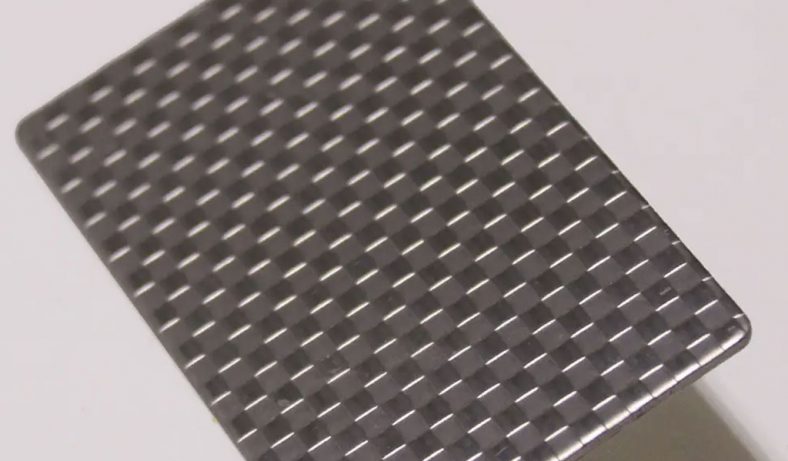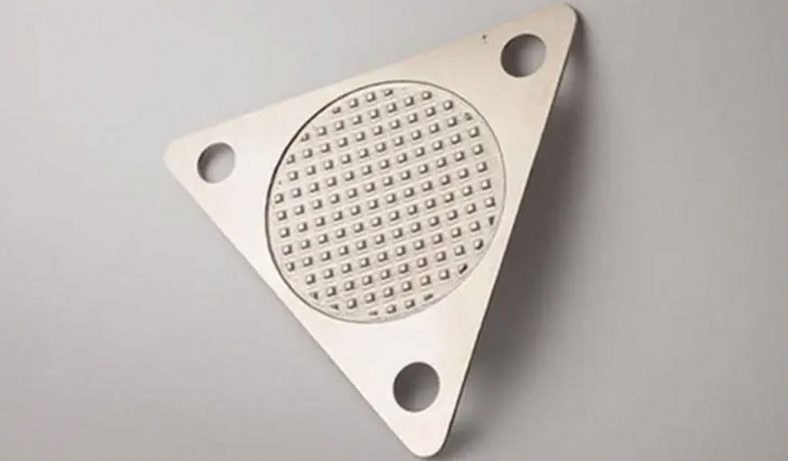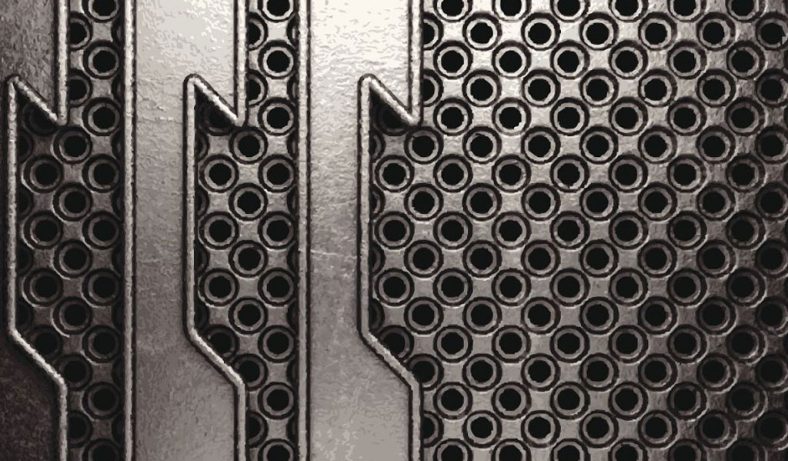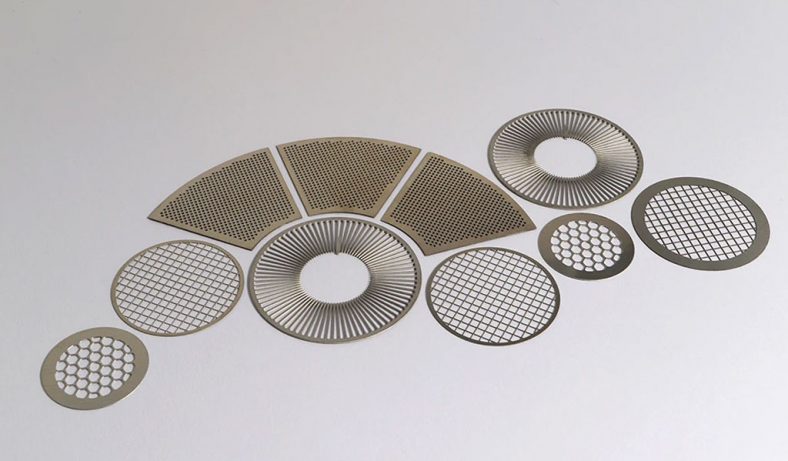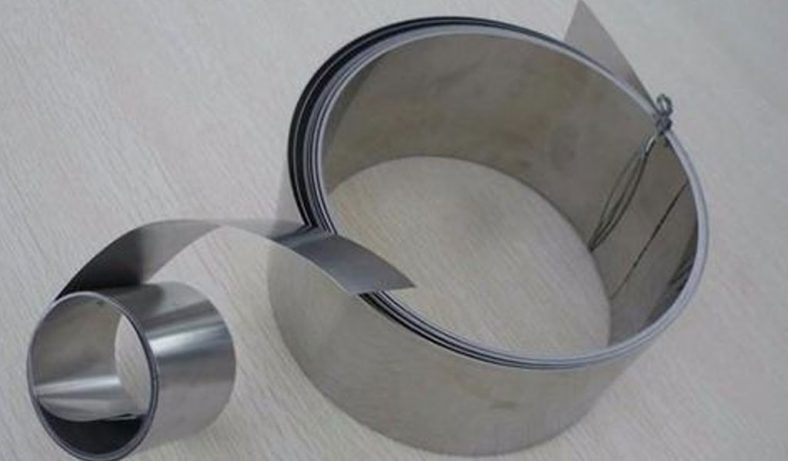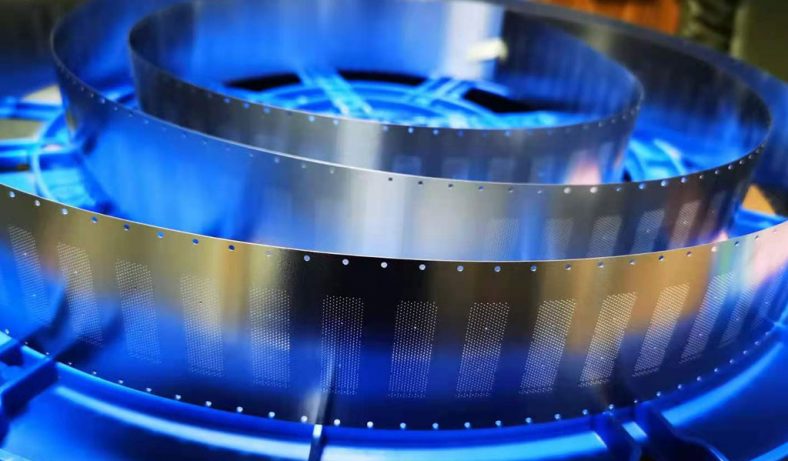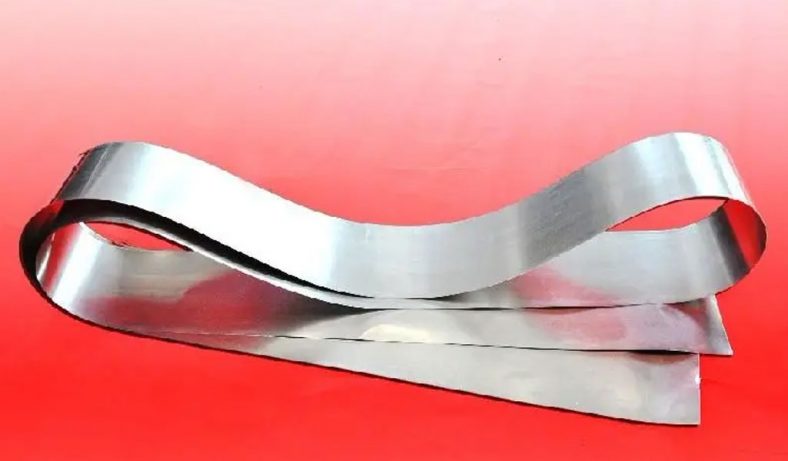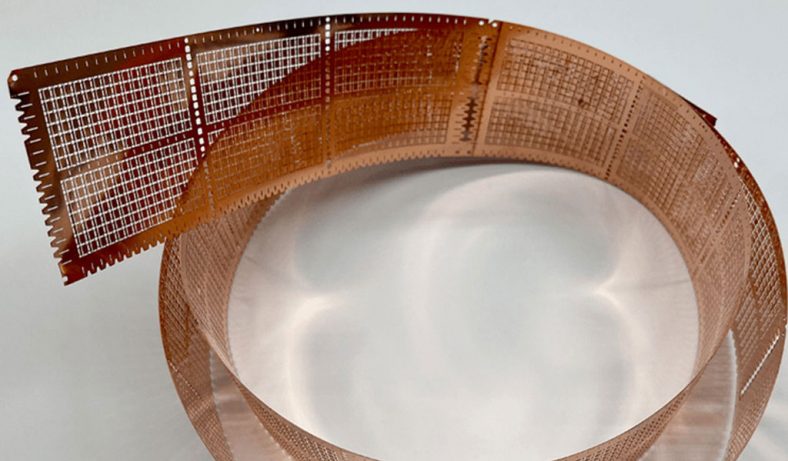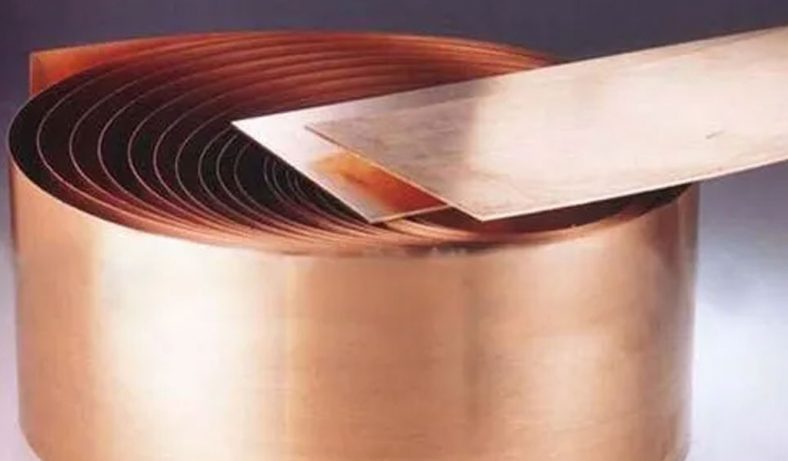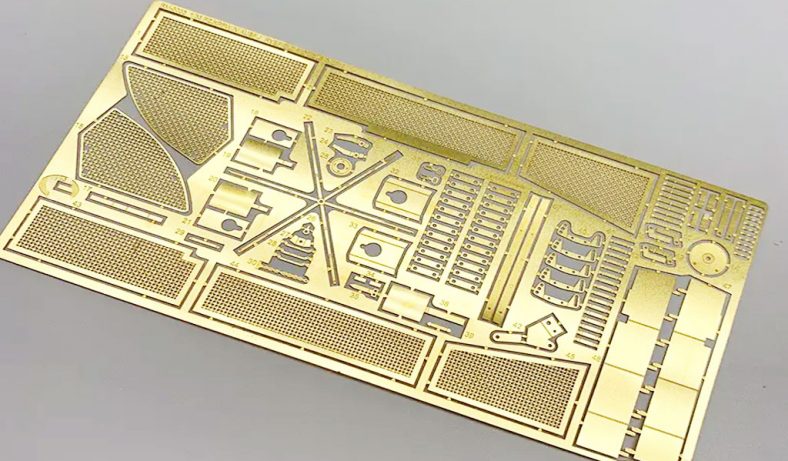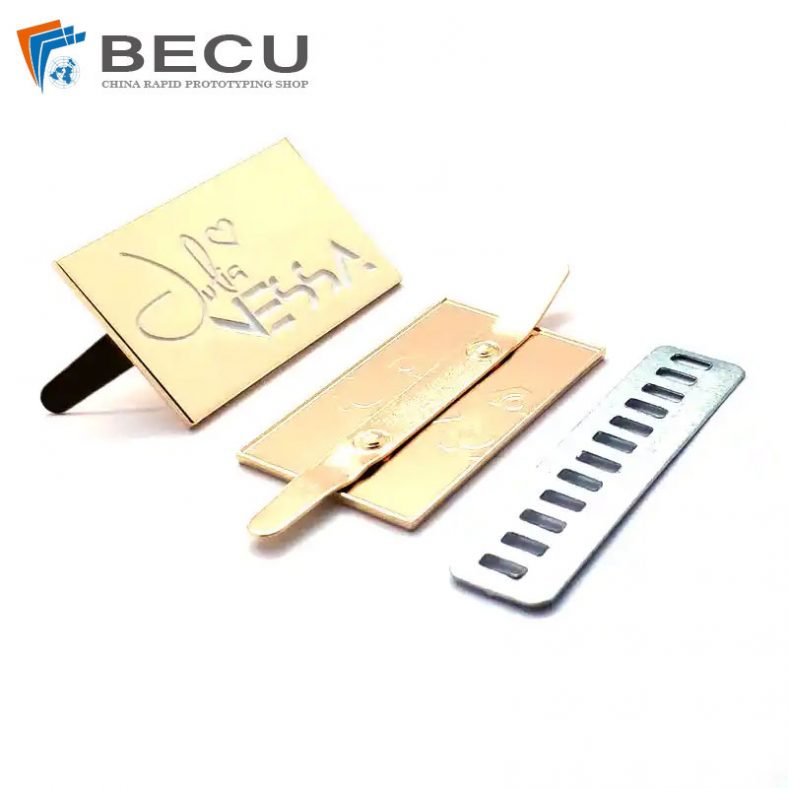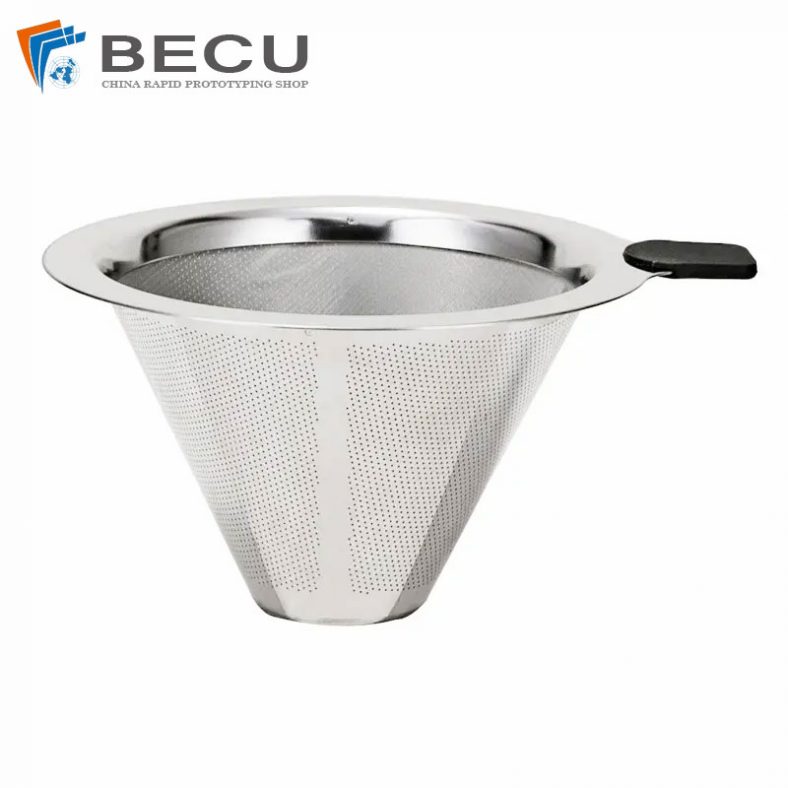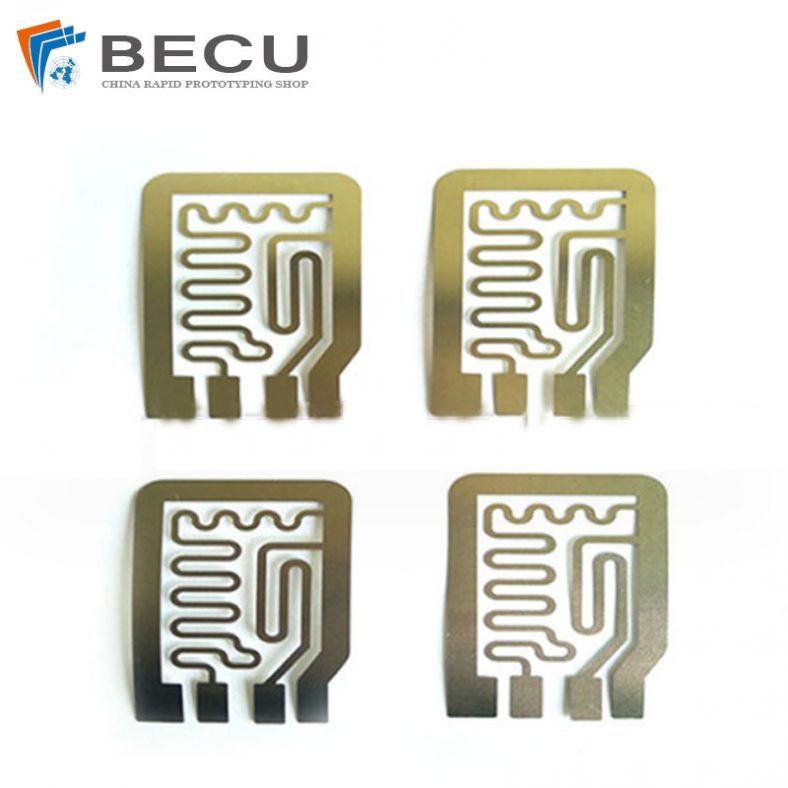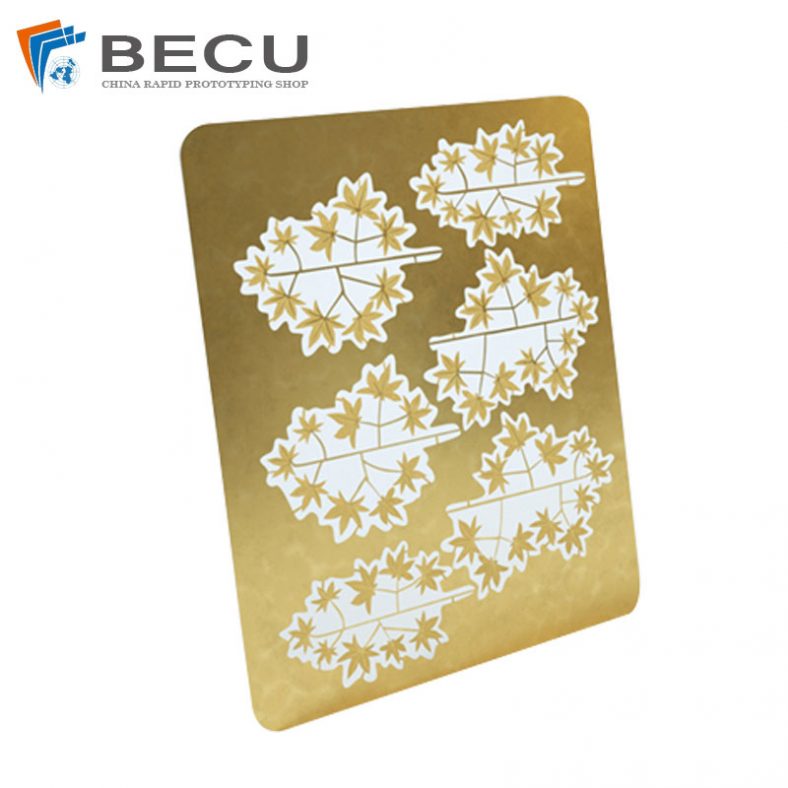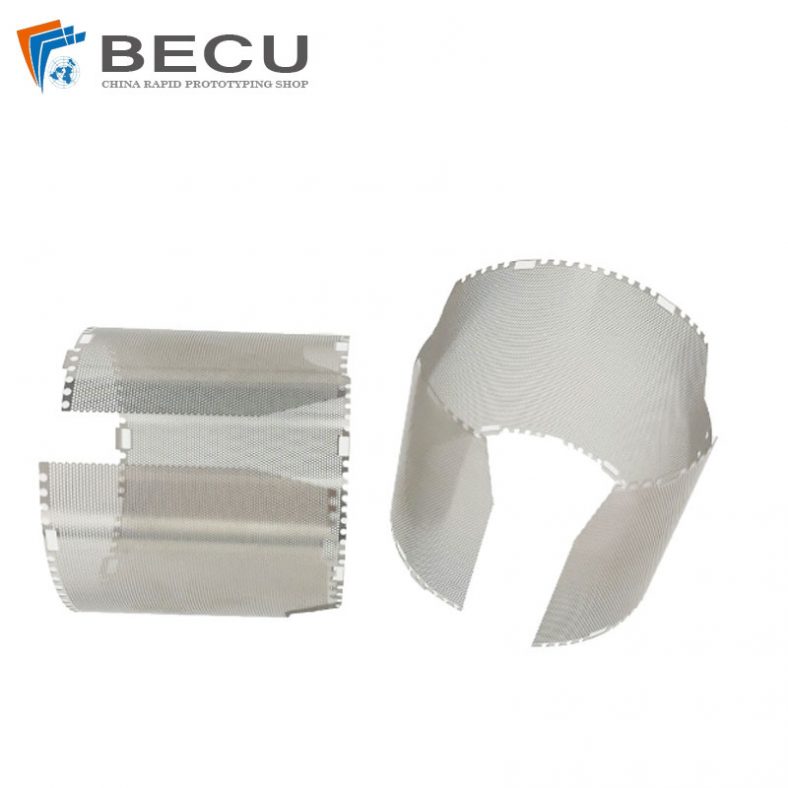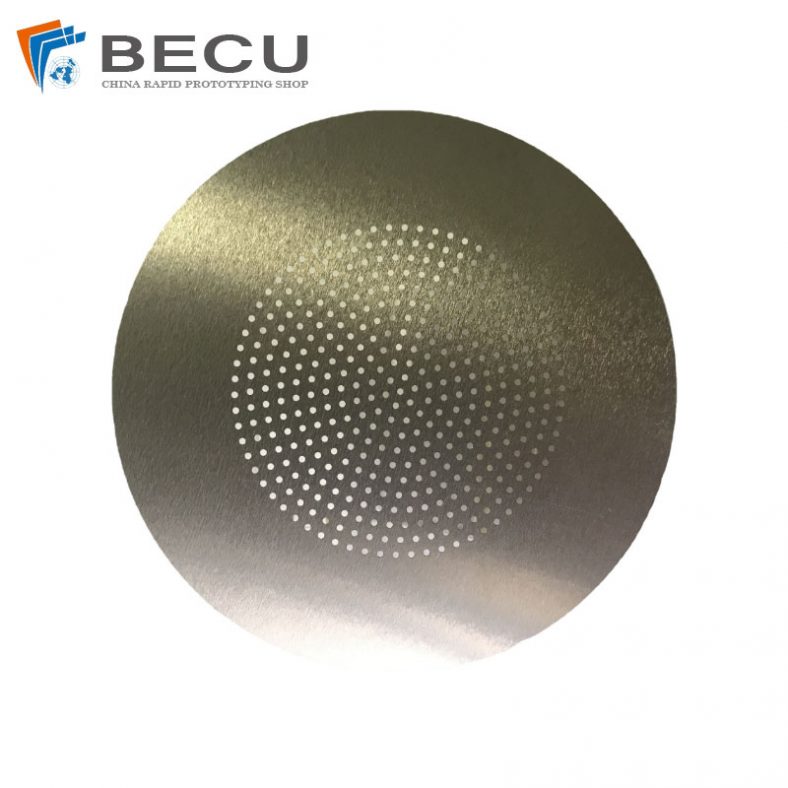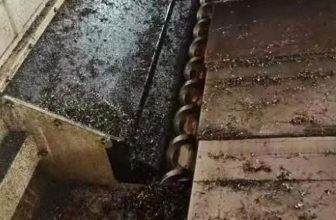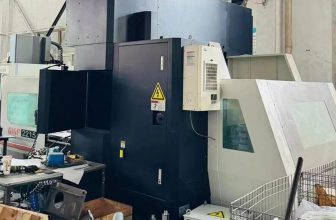Wet etching is a widely utilized material removal process in materials science and engineering, particularly in the fabrication of micro- and nanostructures for applications in electronics, optics, and surface engineering. This process involves the chemical dissolution of a material’s surface using liquid etchants, which selectively remove material to achieve desired patterns or surface characteristics. In the context of zinc alloys—metallic materials composed primarily of zinc combined with elements such as aluminum, copper, or magnesium—wet etching plays a critical role in tailoring surface properties, including surface roughness. Surface roughness, a measure of the texture and irregularities on a material’s surface, significantly influences the alloy’s mechanical, tribological, and chemical properties, such as wear resistance, wettability, and corrosion behavior.
The mechanism by which wet etching affects the surface roughness of zinc alloys is complex, governed by a combination of chemical reactions, etchant composition, material microstructure, and processing conditions. Unlike dry etching techniques, which rely on plasma or ion bombardment, wet etching is isotropic or anisotropic depending on the etchant and material properties, leading to unique surface morphologies. For zinc alloys, the etching process can either smooth or roughen the surface, depending on factors such as etchant type (acidic, alkaline, or neutral), concentration, temperature, etching time, and the alloy’s crystallographic structure. Recent studies have highlighted the importance of understanding these mechanisms to optimize surface finishes for industrial applications, including die-casting, corrosion-resistant coatings, and microelectromechanical systems (MEMS).
This article provides a comprehensive exploration of the mechanisms underlying wet etching’s impact on the surface roughness of zinc alloys. It examines the chemical and physical principles of wet etching, the role of zinc alloy composition and microstructure, and the influence of etching parameters. Detailed comparisons of etchant types, their effects on surface morphology, and quantitative data on surface roughness are presented, supported by tables summarizing key findings from recent studies. The article also discusses advanced characterization techniques, such as atomic force microscopy (AFM) and scanning electron microscopy (SEM), used to analyze etched surfaces, and explores practical applications and challenges in controlling surface roughness. By synthesizing fundamental science with practical insights, this article aims to serve as a definitive resource for researchers, engineers, and material scientists working with zinc alloys.
Fundamentals of Wet Etching
Chemical Basis of Wet Etching
Wet etching relies on chemical reactions between the etchant solution and the material surface, resulting in the dissolution of surface atoms or compounds. For zinc alloys, the etching process typically involves redox reactions where the zinc or alloying elements are oxidized and dissolved into the etchant solution. The general reaction for zinc in an acidic etchant, such as hydrochloric acid (HCl), can be expressed as:
[ \text{Zn} + 2\text{HCl} \rightarrow \text{ZnCl}_2 + \text{H}_2 ]
In this reaction, zinc atoms lose electrons to form zinc ions ((\text{Zn}^{2+})), which combine with chloride ions to form soluble zinc chloride ((\text{ZnCl}_2)), while hydrogen gas is released. The reaction rate depends on the etchant’s pH, concentration, and the presence of secondary species, such as complexing agents or oxidants.
In alkaline etchants, such as sodium hydroxide (NaOH), zinc reacts to form soluble zincate ions:
[ \text{Zn} + 2\text{NaOH} + 2\text{H}_2\text{O} \rightarrow \text{Na}_2\text{Zn(OH)}_4 + \text{H}_2 ]
This reaction is particularly relevant for zinc alloys used in applications requiring smooth surfaces, as alkaline etchants often produce less aggressive etching compared to acidic solutions. The choice of etchant significantly influences the surface morphology, with acidic etchants typically leading to rougher surfaces due to rapid material removal, while alkaline etchants may promote smoother finishes under controlled conditions.
Types of Etchants for Zinc Alloys
Wet etching of zinc alloys employs a variety of etchants, each with distinct chemical properties and effects on surface roughness. The most common etchants include:
- Acidic Etchants: Hydrochloric acid (HCl), nitric acid (HNO₃), phosphoric acid (H₃PO₄), and acetic acid (CH₃COOH) are widely used due to their high reactivity with zinc. These etchants rapidly dissolve zinc, often leading to anisotropic etching and increased surface roughness.
- Alkaline Etchants: Sodium hydroxide (NaOH), ammonium hydroxide (NH₄OH), and ammonium carbonate ((NH₄)₂CO₃) are used for controlled etching, producing smoother surfaces in some cases due to slower, diffusion-limited reactions.
- Neutral or Oxidative Etchants: Solutions containing hydrogen peroxide (H₂O₂) or ferric chloride (FeCl₃) are used for specific applications, such as microstructuring or polishing, where moderate etching rates are desired.
The choice of etchant depends on the desired surface finish, alloy composition, and application. For instance, HCl is commonly used for rapid material removal in die-casting applications, while NH₄OH may be preferred for microfabrication requiring precise control over surface roughness.
Isotropic vs. Anisotropic Etching
Wet etching can be isotropic, where material removal occurs uniformly in all directions, or anisotropic, where etching rates vary with crystallographic orientation. For zinc alloys, which typically have a hexagonal close-packed (HCP) crystal structure, anisotropic etching is common due to differences in etch rates along different crystallographic planes. The (0001) basal plane of zinc, for example, etches more slowly than the (10(\overline{1})0) prismatic planes, leading to the formation of distinct surface features such as pyramids, cones, or hillocks.
Anisotropic etching is particularly pronounced in acidic etchants, where the etchant preferentially attacks high-energy planes, resulting in rough surfaces with pronounced micro- and nanoscale features. In contrast, isotropic etching, often achieved with dilute or neutral etchants, tends to smooth the surface by uniformly dissolving material. The balance between isotropic and anisotropic etching is a key factor in controlling surface roughness and is influenced by etchant chemistry, alloy microstructure, and processing conditions.
Zinc Alloy Composition and Microstructure
Common Zinc Alloys
Zinc alloys are engineered materials designed for specific mechanical and chemical properties. The most common zinc alloys used in industrial applications include:
- Zamak Alloys: These are zinc-aluminum alloys (e.g., Zamak 3, Zamak 5) containing 3–5% aluminum, with minor additions of copper and magnesium. Zamak alloys are widely used in die-casting due to their excellent castability and mechanical strength.
- ZA Alloys: These high-aluminum zinc alloys (e.g., ZA-8, ZA-27) contain 8–27% aluminum, offering superior strength and wear resistance but increased susceptibility to etching-induced roughness.
- Zinc-Copper Alloys: These alloys, often used in brass-like applications, contain copper to enhance corrosion resistance and hardness.
- Zinc-Magnesium Alloys: These are used in biomedical applications due to their biocompatibility, with magnesium influencing etching behavior and surface morphology.
The composition of these alloys significantly affects their etching behavior. For example, aluminum in Zamak and ZA alloys forms intermetallic phases, such as Al-Zn eutectics, which etch at different rates than the zinc matrix, leading to heterogeneous surface roughness.
Microstructural Influences
The microstructure of zinc alloys, including grain size, phase distribution, and crystallographic orientation, plays a critical role in wet etching outcomes. Zinc alloys typically exhibit a two-phase microstructure consisting of a zinc-rich matrix and secondary phases (e.g., Al-Zn intermetallics, Mg₂Zn₁₁, or CuZn₅). During etching, these phases respond differently to the etchant, resulting in differential etching rates and surface topography variations.
- Grain Size: Smaller grains increase grain boundary density, which can enhance etching rates due to higher defect concentrations, leading to rougher surfaces. Conversely, larger grains may promote smoother surfaces by reducing boundary-related etching.
- Phase Distribution: Inhomogeneous phase distributions, such as dendritic structures in cast alloys, result in uneven etching, with secondary phases often etching more slowly than the zinc matrix, creating protrusions or pits.
- Crystallographic Orientation: The HCP structure of zinc leads to anisotropic etching, with certain planes (e.g., (0001)) resisting etching more than others, contributing to the formation of textured surfaces.
Recent studies, such as those by Sun et al. (2020), have used in situ liquid cell transmission electron microscopy (LCTEM) to observe the etching of ZnO, a related material, revealing how crystallographic polarity influences surface morphology. Similar principles apply to zinc alloys, where the orientation of grains affects the formation of hillocks or pyramids during etching.
Role of Alloying Elements
Alloying elements modify the chemical reactivity and mechanical properties of zinc alloys, influencing their etching behavior. For example:
- Aluminum: Forms protective oxide layers (Al₂O₃) that resist etching, leading to selective dissolution of the zinc matrix and increased roughness.
- Copper: Enhances corrosion resistance but can form insoluble copper compounds during etching, acting as micromasks and increasing surface roughness.
- Magnesium: Promotes the formation of Mg-Zn intermetallics, which etch more slowly than the zinc matrix, resulting in textured surfaces.
The interplay between alloying elements and etchant chemistry is critical for tailoring surface roughness. For instance, in acidic etchants, aluminum-rich phases may remain intact, creating protrusions, while in alkaline etchants, these phases may dissolve more uniformly, smoothing the surface.
Mechanisms of Surface Roughness Evolution
Etching Kinetics and Surface Morphology
The evolution of surface roughness during wet etching is governed by the kinetics of material removal, which depend on the etchant’s reactivity, diffusion rates, and the alloy’s surface energy. The etching process can be divided into three stages:
- Initiation: The etchant reacts with the surface, dissolving zinc atoms and exposing underlying grains or phases. This stage is characterized by the formation of initial surface features, such as pits or hillocks, driven by anisotropic etching or phase heterogeneity.
- Propagation: As etching progresses, surface features amplify due to differential etching rates. For example, in HCl etching, the (0001) planes of zinc form hexagonal pyramids, increasing roughness, while secondary phases may remain as protrusions.
- Stabilization: In prolonged etching, the surface may reach a steady-state roughness, where further material removal does not significantly alter the topography, or it may continue to roughen if micromasking or redeposition occurs.
The surface roughness parameter, ( R_a ) (arithmetic average roughness), is commonly used to quantify these changes. Studies have shown that ( R_a ) increases with etching time in acidic etchants due to the formation of pyramids and cones, while alkaline etchants may reduce ( R_a ) by smoothing initial irregularities.
Micromasking and Surface Features
Micromasking is a critical mechanism in wet etching that significantly affects surface roughness. During etching, insoluble reaction products, oxide layers, or alloying element compounds (e.g., Al₂O₃, CuZn₅) can deposit on the surface, acting as local masks. These masks protect underlying material, leading to uneven etching and the formation of protrusions or hillocks. For zinc alloys, micromasking is particularly prevalent in acidic etchants, where aluminum or copper compounds form insoluble residues.
Sun et al. (2020) observed micromasking in ZnO etching, where nanoparticles on hillock apices prevented etching, leading to rough surfaces. Similar effects occur in zinc alloys, where Al-rich phases or oxide layers create textured surfaces. The extent of micromasking depends on etchant composition, with oxidative etchants (e.g., H₂O₂) exacerbating the effect by promoting oxide formation.
Anisotropic Etching and Crystallographic Effects
The HCP structure of zinc alloys results in anisotropic etching, where etch rates vary with crystallographic orientation. The (0001) basal plane, with its high atomic packing density, etches more slowly than prismatic planes, leading to the formation of hexagonal pyramids or cones. These features increase surface roughness, as observed in HCl-etched ZnO surfaces, where sidewall angles of pyramids are approximately 45°.
The anisotropy is further influenced by etchant chemistry. For example, phosphoric acid (H₃PO₄) produces smoother surfaces than HCl due to its diffusion-limited etching mechanism, which minimizes crystallographic selectivity. In contrast, HCl promotes rapid, reaction-limited etching, accentuating crystallographic differences and increasing roughness.
Surface Energy and Wettability
Surface roughness is closely linked to surface energy and wettability, which are altered during wet etching. Rough surfaces with high ( R_a ) values typically exhibit lower surface energy, leading to hydrophobic or superhydrophobic behavior. For zinc alloys, etching can be tailored to achieve specific wettability properties, such as superhydrophobicity for corrosion resistance.
Studies have shown that HCl-etched zinc alloy surfaces, with their pyramid-like features, exhibit contact angles greater than 150°, indicative of superhydrophobicity. This is attributed to the combined effects of increased roughness and low surface energy coatings, such as zinc oxide (ZnO) or organic modifiers, formed during etching. In contrast, alkaline-etched surfaces, with smoother morphologies, may remain hydrophilic unless post-treated.
Etching Parameters and Their Effects
Etchant Concentration
The concentration of the etchant directly affects the etching rate and surface roughness. Higher concentrations increase the availability of reactive species, accelerating material removal and often leading to rougher surfaces. For example, in HCl etching of zinc alloys, increasing the concentration from 0.25% to 10% can increase the etch rate from 120 nm/min to over 500 nm/min, with a corresponding rise in ( R_a ) from 50 nm to 200 nm.
Table 1 summarizes the effects of etchant concentration on surface roughness for common zinc alloys:
| Etchant | Concentration (%) | Alloy | Etch Rate (nm/min) | ( R_a ) (nm) | Surface Morphology |
|---|---|---|---|---|---|
| HCl | 0.25 | Zamak 3 | 120 | 50 | Smooth with pits |
| HCl | 10 | Zamak 3 | 500 | 200 | Pyramidal textures |
| H₃PO₄ | 10 | ZA-8 | 80 | 30 | Smooth |
| NaOH | 5 | Zamak 5 | 60 | 20 | Uniformly smooth |
Etching Time
Etching time influences the extent of material removal and the development of surface features. Short etching times (e.g., 30 seconds) may produce minimal roughness, while prolonged etching (e.g., 5 minutes) amplifies surface features, such as pyramids or hillocks, increasing ( R_a ). However, in some cases, extended etching can smooth the surface by removing initial irregularities, particularly in diffusion-limited etchants like NH₄OH.
Table 2 compares surface roughness as a function of etching time:
| Etchant | Time (min) | Alloy | ( R_a ) (nm) | Observations |
|---|---|---|---|---|
| HCl | 0.5 | Zamak 3 | 40 | Initial pitting |
| HCl | 5 | Zamak 3 | 180 | Hexagonal pyramids |
| NH₄OH | 1 | ZA-8 | 25 | Smooth surface |
| NH₄OH | 10 | ZA-8 | 15 | Polished finish |
Temperature
Etching temperature affects reaction kinetics and diffusion rates, influencing surface roughness. Higher temperatures increase etch rates, often leading to rougher surfaces due to enhanced anisotropic etching. For example, etching Zamak 3 in HCl at 45°C produces a rougher surface (( R_a ) ≈ 250 nm) compared to 25°C (( R_a ) ≈ 150 nm).
Table 3 illustrates the effect of temperature on surface roughness:
| Etchant | Temperature (°C) | Alloy | Etch Rate (nm/min) | ( R_a ) (nm) |
|---|---|---|---|---|
| HCl | 25 | Zamak 3 | 400 | 150 |
| HCl | 45 | Zamak 3 | 600 | 250 |
| H₂O₂ | 25 | ZA-27 | 50 | 30 |
| H₂O₂ | 35 | ZA-27 | 80 | 40 |
Additives and Modifiers
Additives, such as surfactants (e.g., isopropyl alcohol, IPA) or complexing agents (e.g., glycine), can modify etching behavior and surface roughness. IPA, for instance, reduces surface tension, promoting uniform etching and smoother surfaces. Glycine can inhibit excessive etching by forming complexes with zinc ions, reducing roughness in peroxide-based etchants.
Table 4 summarizes the effects of additives:
| Etchant | Additive | Concentration | Alloy | ( R_a ) (nm) | Effect |
|---|---|---|---|---|---|
| TMAH | IPA | 10 vol% | Zamak 3 | 20 | Smoother surface |
| H₂O₂ | Glycine | 0.1 M | ZA-8 | 25 | Reduced roughness |
| HCl | None | – | Zamak 3 | 200 | Rough pyramids |
Characterization Techniques
Atomic Force Microscopy (AFM)
AFM is a primary tool for quantifying surface roughness at the nanoscale. It provides high-resolution topography images, measuring parameters such as ( R_a ), ( R_q ) (root mean square roughness), and ( R_z ) (maximum height). AFM studies of etched zinc alloys reveal the formation of pyramids, hillocks, or smooth surfaces, depending on the etchant. For example, HCl-etched Zamak 3 surfaces show ( R_a ) values of 150–200 nm, with distinct pyramidal features, while NH₄OH-etched surfaces exhibit ( R_a ) values below 20 nm.
Scanning Electron Microscopy (SEM)
SEM provides detailed images of surface morphology, revealing features such as pyramids, cones, or pits. SEM studies of HCl-etched zinc alloys show hexagonal pyramids with sidewall angles of approximately 45°, consistent with anisotropic etching along the (0001) plane. In contrast, H₃PO₄-etched surfaces appear smoother, with minimal topographic variation.
X-Ray Photoelectron Spectroscopy (XPS)
XPS is used to analyze surface chemistry post-etching, identifying oxide layers, reaction products, or micromasking residues. For zinc alloys, XPS reveals the presence of ZnO or Al₂O₃ layers, which influence roughness by acting as etch barriers or micromasks.
Contact Angle Measurements
Contact angle measurements assess wettability, which correlates with surface roughness. Rough, pyramid-textured surfaces exhibit high contact angles (>150°), indicative of superhydrophobicity, while smooth surfaces remain hydrophilic (<90°).
Applications and Industrial Relevance
Die-Casting and Surface Finishing
Zinc alloys, particularly Zamak, are widely used in die-casting for automotive and consumer goods. Wet etching is employed to remove surface defects, improve finish, or create textured surfaces for coatings. Controlling roughness is critical to ensure adhesion and corrosion resistance.
Microelectromechanical Systems (MEMS)
In MEMS, zinc alloys are used for their castability and biocompatibility. Wet etching creates micro- and nanostructures, where precise roughness control is essential for device performance, such as in sensors or actuators.
Corrosion-Resistant Coatings
Superhydrophobic surfaces, achieved through rough etching and hydrophobic coatings, enhance corrosion resistance in marine or industrial environments. HCl-etched zinc alloys with pyramid textures are ideal candidates for such applications.
Biomedical Applications
Zinc-magnesium alloys are explored for biodegradable implants. Etching controls surface roughness to optimize biocompatibility and osseointegration, with smoother surfaces often preferred for tissue interaction.
Challenges and Future Directions
Controlling Surface Roughness
Achieving consistent roughness across large areas remains a challenge due to variations in alloy microstructure, etchant uniformity, and micromasking. Advanced techniques, such as in situ monitoring with LCTEM, could provide real-time insights into etching dynamics, enabling better control.
Environmental Considerations
Many etchants, such as HCl and HNO₃, are hazardous and require careful handling and disposal. Developing eco-friendly etchants, such as NH₄OH-based solutions, is a priority for sustainable manufacturing.
Integration with Advanced Manufacturing
Combining wet etching with additive manufacturing or laser processing could enable hybrid approaches to surface engineering, allowing precise control over roughness and functionality.
Research Gaps
Despite advances, gaps remain in understanding the role of alloying elements, long-term stability of etched surfaces, and the scalability of etching processes. Future studies should focus on these areas, leveraging advanced characterization and computational modeling.
Conclusion
Wet etching is a versatile and powerful technique for modifying the surface roughness of zinc alloys, with applications spanning die-casting, MEMS, corrosion resistance, and biomedical engineering. The mechanisms governing roughness evolution involve complex interactions between etchant chemistry, alloy microstructure, and processing conditions. Acidic etchants, such as HCl, produce rough, textured surfaces with pyramidal features, while alkaline etchants, like NH₄OH, promote smoother finishes. Parameters such as concentration, time, temperature, and additives allow precise control over surface morphology, as evidenced by quantitative data from AFM, SEM, and XPS.
Tables summarizing etchant effects highlight the trade-offs between etch rate, roughness, and morphology, providing a valuable reference for researchers and engineers. Challenges in controlling roughness, environmental concerns, and integration with advanced manufacturing underscore the need for continued research. By addressing these challenges, wet etching can unlock new possibilities for zinc alloys in high-performance applications, cementing its role as a cornerstone of materials processing.

